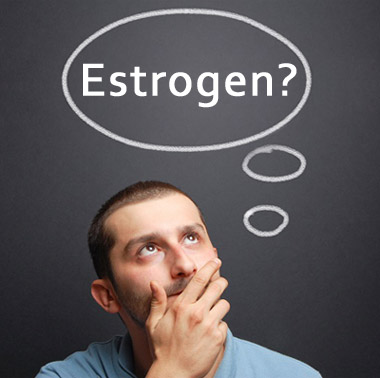Estrogen elevations in response to Testosterone Therapy – to treat or not?

Sexual Function
Bone Mineral Density and Fracture Risk
Mortality Risk - importance of keeping estradiol levels in check
Bottom Line
1. Lakshman, K.M., et al., The effects of injected testosterone dose and age on the conversion of testosterone to estradiol and dihydrotestosterone in young and older men. J Clin Endocrinol Metab, 2010. 95(8): p. 3955-64.
2. Kacker, R., A.M. Traish, and A. Morgentaler, Estrogens in men: clinical implications for sexual function and the treatment of testosterone deficiency. J Sex Med, 2012. 9(6): p. 1681-96.
3. Amory, J.K., et al., Exogenous testosterone or testosterone with finasteride increases bone mineral density in older men with low serum testosterone. J Clin Endocrinol Metab, 2004. 89(2): p. 503-10.
4. Schubert, M., et al., Intramuscular testosterone undecanoate: pharmacokinetic aspects of a novel testosterone formulation during long-term treatment of men with hypogonadism. J Clin Endocrinol Metab, 2004. 89(11): p. 5429-34.
5. Tan, R.S., K.R. Cook, and W.G. Reilly, High Estrogen in Men After Injectable Testosterone Therapy: The Low T Experience. Am J Mens Health, 2014.
6. Finkelstein, J.S., et al., Gonadal steroids and body composition, strength, and sexual function in men. N Engl J Med, 2013. 369(11): p. 1011-22.
7. Vanderschueren, D., et al., Gonadal sex steroid status and bone health in middle-aged and elderly European men. Osteoporos Int, 2010. 21(8): p. 1331-9.
8. Vanderschueren, D., et al., Sex steroid actions in male bone. Endocr Rev, 2014: p. er20141024.
9. Ohlsson, C., A.E. Borjesson, and L. Vandenput, Sex steroids and bone health in men. Bonekey Rep, 2012. 1: p. 2.
10. Clarke, B.L. and S. Khosla, Androgens and bone. Steroids, 2009. 74(3): p. 296-305.
11. Burnett-Bowie, S.A., et al., Effects of aromatase inhibition on bone mineral density and bone turnover in older men with low testosterone levels. J Clin Endocrinol Metab, 2009. 94(12): p. 4785-92.
12. Meriggiola, M.C., et al., Effects of testosterone undecanoate administered alone or in combination with letrozole or dutasteride in female to male transsexuals. J Sex Med, 2008. 5(10): p. 2442-53.
13. Ohlsson, C., A.E. Borjesson, and L. Vandenput, Sex steroids and bone health in men. BoneKEy Rep, 2012. 1.
14. Rhoden, E.L. and A. Morgentaler, Treatment of testosterone-induced gynecomastia with the aromatase inhibitor, anastrozole. Int J Impot Res, 2004. 16(1): p. 95-7.
15. Jankowska, E.A., et al., Circulating estradiol and mortality in men with systolic chronic heart failure. JAMA, 2009. 301(18): p. 1892-901.
16. Tivesten, A., et al., Low serum testosterone and estradiol predict mortality in elderly men. J Clin Endocrinol Metab, 2009. 94(7): p. 2482-8.



